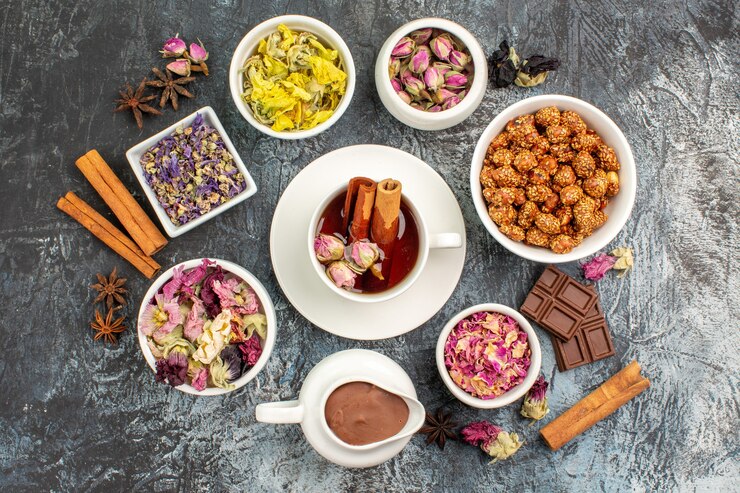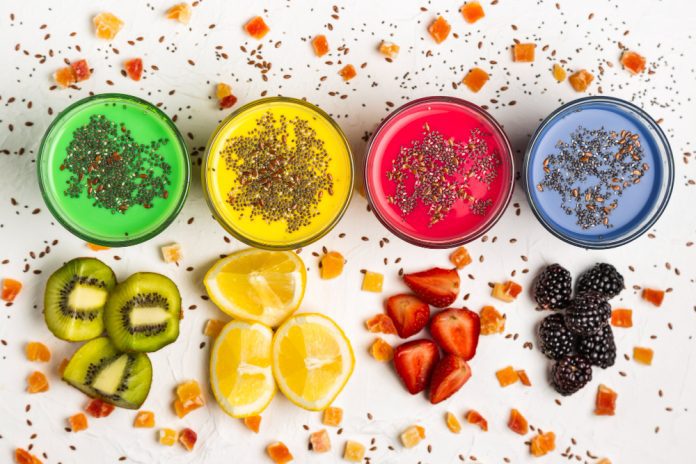The culinary world thrives on tradition and technique. Mastering classic dishes and perfecting familiar flavor profiles form the foundation of a skilled chef’s repertoire. But within this framework lies a space for exploration, a realm where curiosity and experimentation can lead to delightful discoveries. This space is where unexpected flavor combinations come into play, transforming how we perceive and experience Food and Beverages.
The Allure of the Unexpected
Our palates are conditioned by experience. We learn to associate certain flavors as natural complements—sweet and salty, bitter and sweet, savory and umami. However, venturing beyond these well-trodden paths can unlock a world of surprising delights. The human sense of taste is incredibly nuanced, capable of detecting an astonishing spectrum of flavors and appreciating their interplay.
Unexpected flavor combinations can surprise and tantalize our taste buds in several ways:
- Heightened Contrast: Juxtaposing strong opposing flavors, like sweet and spicy or salty and sour, can create an invigorating tension on the palate. This keeps the taste buds engaged and prompts them to explore the nuances of each element.
- Depth and Complexity: Combining flavors from seemingly disparate categories can introduce unexpected layers of complexity to a dish. Imagine the earthy richness of mushrooms paired with the delicate sweetness of caramelized onions or the smoky depth of bacon complementing the vibrant acidity of a citrus glaze.
- Novelty and Intrigue: The surprise inherent in unexpected combinations piques our curiosity and compels us to delve deeper into the flavor profile. It’s an invitation to explore a new sensory landscape, expanding our perception of what food and beverages can be.
Examples of Unexpected Flavor Pairings
The world of culinary creativity is brimming with examples of successful and sometimes surprising flavor combinations. Let’s delve into a few examples to illustrate the potential for exploration:
- Sweet & Spicy: This classic pairing finds new life in dishes like Thai curries, where the sweetness of coconut milk balances the heat of chilies, or in dark chocolate drizzled with chili flakes, where the sweet richness is playfully challenged by a touch of spice.
- Salty & Sweet: Salty cheeses and sweet fruits like figs or pears are a well-known and delicious combination. But chefs are pushing the boundaries further, incorporating salty elements like bacon or prosciutto into sweet desserts for a textural and flavor contrast.
- Sour & Savory: Think beyond the classic lemon-caper pairing in fish dishes. Sour elements like vinegar or citrus can add a refreshing brightness to savory dishes, like the tang of balsamic vinegar on roasted vegetables.
Case Studies: Culinary Masters of the Unexpected
Several renowned chefs have made their mark by embracing unexpected flavor combinations. Here are a couple of inspiring examples:
- Grant Achatz: Chef Achatz of Alinea in Chicago is known for his avant-garde approach to cuisine. His dishes often feature surprising flavor pairings, like a foie gras donut or a black truffle ice cream with parmesan cheese. While some might find these combinations outlandish, Chef Achatz’s playful experimentation pushes the boundaries of fine dining and challenges diners to reconsider their preconceptions about food.
- David Chang: The mastermind behind Momofuku restaurants, Chef Chang is celebrated for his innovative take on Asian cuisine. His dishes often incorporate unexpected flavor combinations that bridge cultural culinary traditions. Think kimchi tacos or pork buns with hoisin sauce and sriracha mayo. Chef Chang’s creations showcase the exciting possibilities when cultural influences collide in the kitchen.

Crafting Your Own Culinary Adventures
The beauty of exploring unexpected flavor combinations lies in its accessibility. You don’t need professional chef’s training to embark on this culinary adventure. Here are some tips to get you started:
- Start Simple: Begin by experimenting with subtle variations on familiar dishes. Add a touch of citrus zest to a savory soup, or sprinkle crumbled cheese over fresh fruit salad. These small tweaks can introduce surprising depth without overwhelming your palate.
- Embrace Seasonality: Seasonal ingredients often boast the most vibrant flavors. Explore your local farmers market and let the available produce inspire your culinary creativity. For instance, pair the sweetness of summer berries with savory herbs like basil or mint, or incorporate the earthy richness of winter root vegetables into a dessert dish.
- Think Outside the Box: Don’t be afraid to draw inspiration from cuisines outside your comfort zone. Explore flavor profiles from different cultures and experiment with incorporating elements from those traditions into your own cooking.
The Importance of Balance
While experimentation is key, achieving a successful unexpected flavor combination requires balance. Here are some things to keep in mind:
- Consider Complementary Flavors: Research flavor profiles and identify ingredients that naturally complement each other. Websites like The Flavor Thesaurus: [invalid URL removed] offer a wealth of information on flavor affinities, helping you brainstorm potential pairings.
- Start Subtle: Don’t overwhelm your palate with overly contrasting flavors. Begin with subtle introductions and gradually increase the intensity as you refine your combinations.
- Focus on Harmony: The ultimate goal is to create a harmonious interplay of flavors, not a chaotic clash. Each element should contribute to the overall experience, building a symphony of taste sensations rather than a cacophony.
Beyond the Plate: Unexpected Flavor Pairings in Beverages
The exploration of unexpected flavor combinations extends beyond the realm of food. The world of beverages also offers exciting opportunities to push boundaries and create delightful sensory experiences. Here are some examples:
- Fruity & Herbal: Herbal teas infused with fruits like hibiscus or berries offer a refreshing and complex flavor profile. Similarly, cocktails incorporating botanical elements like rosemary or thyme and citrus fruits create a unique and intriguing taste sensation.
- Spicy & Sweet: Spicy peppers are no longer confined to savory dishes. Spicy cocktails, like a jalapeno margarita or a ginger mojito, add a touch of heat balanced by the sweetness of the base spirit and mixers. Try sparkling water infused with muddled jalapenos and fresh fruit for a non-alcoholic twist.
- Smoky & Savory: Smoked ingredients like mezcal or lapsang souchong tea can add a fascinating smoky depth to cocktails. Pair these smoky elements with sweet and savory components like fruits, herbs, or spices to create a truly unique and memorable beverage experience.
Ending Note
The world of food and beverages is a vast and ever-evolving playground for the curious palate. By embracing unexpected flavor combinations, we embark on a journey of discovery, pushing the boundaries of our taste experiences and expanding our appreciation for the culinary arts. So, the next time you step into the kitchen or explore a beverage menu, embrace the spirit of experimentation. You might stumble upon a serendipitous flavor pairing that becomes your new favorite.























